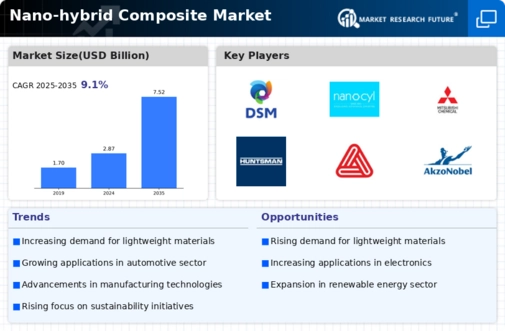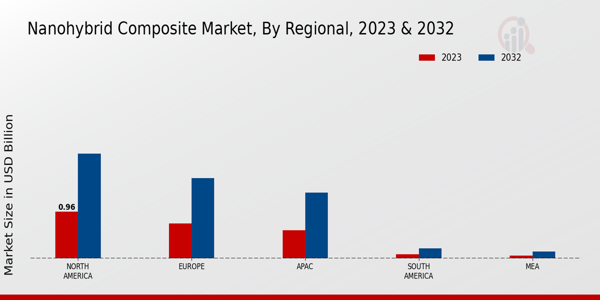Market Growth Projections
The Global Nano-hybrid Composite Market Industry is projected to experience substantial growth over the next decade. With a market value anticipated to reach 2.87 USD Billion in 2024 and potentially 7.52 USD Billion by 2035, the industry is on a promising trajectory. The expected CAGR of 9.15% from 2025 to 2035 highlights the increasing interest and investment in nano-hybrid composites across various sectors. This growth is driven by advancements in technology, rising demand for lightweight and durable materials, and the push for sustainability. As the market evolves, it is likely to attract further research and development efforts, enhancing its overall potential.
Advancements in Nanotechnology
Advancements in nanotechnology play a pivotal role in the growth of the Global Nano-hybrid Composite Market Industry. The ability to manipulate materials at the nanoscale allows for the development of composites with superior mechanical properties and enhanced durability. For example, the incorporation of nanoparticles can improve tensile strength and impact resistance, making these composites suitable for demanding applications in construction and electronics. As research continues to unveil new possibilities, the market is expected to expand significantly, potentially reaching 7.52 USD Billion by 2035, driven by ongoing innovations and technological breakthroughs.
Regulatory Support and Incentives
Regulatory support and incentives are fostering growth in the Global Nano-hybrid Composite Market Industry. Governments worldwide are implementing policies that encourage the use of advanced materials in various sectors, including construction, automotive, and aerospace. These regulations often include financial incentives for companies that adopt innovative materials, thereby stimulating market demand. As industries respond to these supportive measures, the market is poised for expansion, with projections indicating a significant increase in adoption rates. This regulatory landscape is likely to enhance the competitive edge of nano-hybrid composites, driving further innovation and investment.
Increasing Applications in Electronics
The Global Nano-hybrid Composite Market Industry is witnessing an increasing application of nano-hybrid composites in the electronics sector. These materials are utilized in the production of flexible displays, sensors, and circuit boards, where their lightweight and conductive properties are highly advantageous. The demand for miniaturized electronic devices is propelling the adoption of these composites, as they offer improved performance and reliability. As the electronics industry continues to evolve, the market for nano-hybrid composites is likely to grow, with a projected CAGR of 9.15% from 2025 to 2035, reflecting the expanding scope of applications.
Rising Demand for Lightweight Materials
The Global Nano-hybrid Composite Market Industry experiences a surge in demand for lightweight materials, particularly in the automotive and aerospace sectors. Manufacturers are increasingly adopting nano-hybrid composites to enhance fuel efficiency and reduce emissions. For instance, the integration of these materials in vehicle components can lead to weight reductions of up to 30 percent, significantly impacting overall performance. As the industry evolves, the market is projected to reach 2.87 USD Billion in 2024, with a robust growth trajectory anticipated as companies seek innovative solutions to meet stringent environmental regulations.
Sustainability and Eco-friendly Solutions
Sustainability concerns are driving the Global Nano-hybrid Composite Market Industry towards eco-friendly solutions. Manufacturers are increasingly focusing on developing bio-based nano-hybrid composites that reduce environmental impact while maintaining performance. These materials can be derived from renewable resources, offering a sustainable alternative to traditional composites. As industries strive to meet sustainability goals, the demand for such eco-friendly composites is expected to rise. This trend aligns with global initiatives aimed at reducing carbon footprints, further propelling the market's growth as companies seek to innovate and adopt greener practices.











